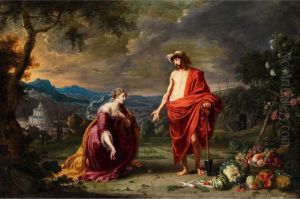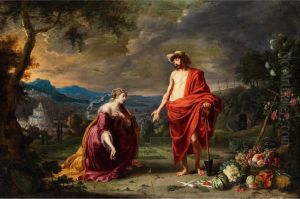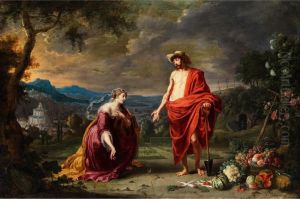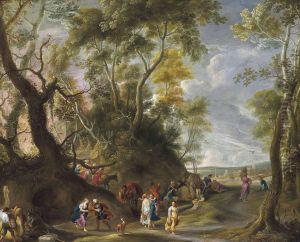Willem Forchondt Paintings
Willem Forchondt was a prominent figure in the 17th-century Flemish art world, not primarily as an artist but as an art dealer, entrepreneur, and member of the Forchondt family, who were influential art dealers and entrepreneurs in Antwerp. Born in 1608 in Antwerp, then part of the Spanish Netherlands, Willem played a significant role in the international art market, contributing to the distribution of Flemish art across Europe and the Americas. His activities were part of a broader trend during the Dutch Golden Age, where art not only flourished in terms of creation but also in its trade and collection.
Willem's involvement in the art world was deeply rooted in his family's business. The Forchondt family's enterprise extended beyond the borders of the Spanish Netherlands, establishing connections in Spain, Germany, Austria, and Italy, among other places. This network allowed them to become one of the most successful art dealing families of their time. Willem, along with his relatives, was instrumental in exporting Flemish paintings, promoting artists such as Peter Paul Rubens, Anthony van Dyck, and Jacob Jordaens by bringing their works to a wider audience.
Under Willem's direction, the Forchondt firm expanded its operations to include not only the trade in paintings but also in luxury goods and art objects. His business acumen and understanding of the international market dynamics enabled the firm to thrive during a period of significant political and economic changes in Europe. Willem's contributions to the art market were not limited to commerce; he also had a keen interest in the production of art, commissioning works from contemporary artists and thus directly influencing the art scene of his time.
Willem Forchondt's legacy is a testament to the crucial role that art dealers played in the 17th century, acting as intermediaries between artists and patrons, and facilitating the spread of the Baroque style throughout Europe. His death in 1678 marked the end of an era for the Forchondt family business, which continued under the leadership of his descendants but never quite matched the prominence it achieved during his lifetime. Today, Willem Forchondt is remembered not only for his contributions to the art trade but also for his impact on the cultural exchange of the Baroque period.



